Ditapis dengan
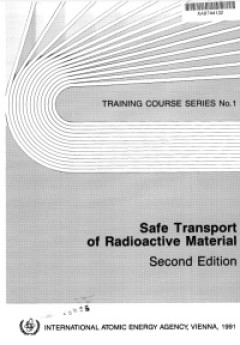
Safe Transport of Radioactive Material, Second Edition
In 1991, the International Atomic Energy Agency published Training Course Series No. 1 (TCS-1), a training manual that provides in 20 chapters a detailed discussion of the background, philosophy, technical bases and requirements and implementation aspects of the Regulations for the Safe Transport of Radioactive Material. The Transport Regulations are widely implemented by the IAEA's Member Stat…
- Edisi
- -
- ISBN/ISSN
- -
- Deskripsi Fisik
- 365 p. : Illus. ; 30 cm
- Judul Seri
- Training Course Series No. 1
- No. Panggil
- 621.039746 IAE s
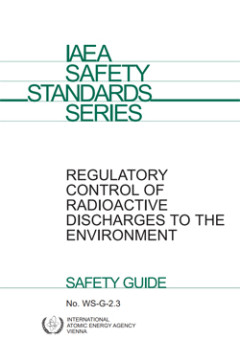
Regulatory Control of Radioactive Discharges to the Environment | IAEA Safety…
This Safety Guide makes recommendations concerning the regulatory process for controlling the discharge of liquid and gaseous effluents to the environment from normal controlled operations of practices in which radioactive material is used.
- Edisi
- -
- ISBN/ISSN
- 92-0-101000-1
- Deskripsi Fisik
- 43 pages; 171KB
- Judul Seri
- -
- No. Panggil
- 363.7289 IAE R
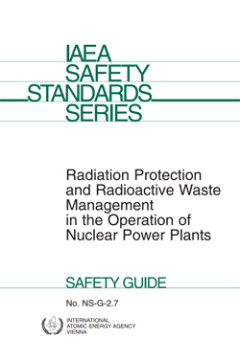
Radiation Protection and Radioactive Waste Management in the Operation of Nuc…
This Safety Guide provides recommendations on meeting the requirements, including those established in Safety Standards Series No. NS-R-1, Safety of Nuclear Power Plants: Design, for the development of programmes for radiation protection and for the management of radioactive waste at nuclear power plants.
- Edisi
- -
- ISBN/ISSN
- 92-0-119202-9
- Deskripsi Fisik
- 63p; 256KB
- Judul Seri
- -
- No. Panggil
- 621.48335 IAE R
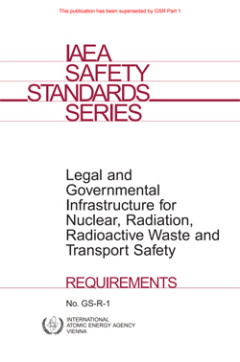
Legal and Governmental Infrastructure for Nuclear, Radiation, Radioactive Was…
This Safety Requirements publication establishes the requirements for the legal and governmental infrastructure in respect of a range of facilities and activities, including nuclear facilities, sources of ionizing radiation, management of radioactive waste and transport of radioactive material. It covers development of the legal framework for establishing a regulatory body and other actions to …
- Edisi
- -
- ISBN/ISSN
- 92-0-100800-7
- Deskripsi Fisik
- 30p;107KB
- Judul Seri
- -
- No. Panggil
- 621.48335 IAE L
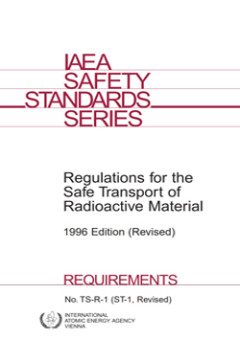
Regulations for the Safe Transport of Radioactive Material, 1996 Edition (Rev…
This publication, Safety Standards Series No. TS-R-1, is an updated version of Safety Standards Series No. ST-1, which was a revised version of Safety Series No. 6 superseding all previous edition. It also includes the revision of Safety Series No. 80, Schedules of Requirements for the Transport of Specified Types of Radioactive Material Consignments (As Amended in 1990). These Regulations, fir…
- Edisi
- -
- ISBN/ISSN
- 92-0-100500-8
- Deskripsi Fisik
- 220p;714KB
- Judul Seri
- -
- No. Panggil
- 614.864 IAE R

Handling and Processing of Radioactive Waste from Nuclear Applications | Tech…
This report provides detailed information on the handling, processing and storage techniques most widely used and recommended for waste from non-fuel-cycle activities, i.e. radioactive waste generated during the application of nuclear techniques and radioisotopes in industry, medicine, research and education. The report was designed to meet mainly the needs of developing countries by focusing o…
- Edisi
- 402
- ISBN/ISSN
- 92-0-100801-5
- Deskripsi Fisik
- 153 p; 725KB
- Judul Seri
- -
- No. Panggil
- 621.4838 IAE H
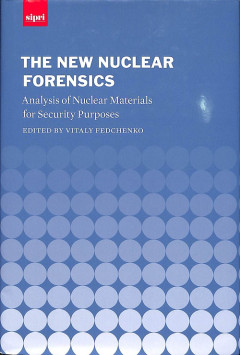
The New Nuclear Forensics: Analysis of Nuclear Materials for Security Purposes
This book is about nuclear forensics. The development of nuclear technology is so advanced for the world of health, agriculture, mining industry, and others. However, on the other hand, nuclear is often misused, for example in terrorism, smuggling of nuclear materials, radioactive substances. Therefore, it is necessary to control and forensic studies to analyze what has happened. This book disc…
- Edisi
- -
- ISBN/ISSN
- 9780198736646
- Deskripsi Fisik
- 279 p. : illus. ; 24,5 cm
- Judul Seri
- -
- No. Panggil
- 303 FED n

Appraisal for Panama of the Safety of the Transport of Radioactive Material |…
The IAEA has the specific statutory function within the United Nations system of establishing standards of safety for the protection of health against exposure to ionizing radiation. As part of this mandate, the IAEA has issued Regulations for the Safe Transport of Radioactive Material, and has also established the Transport Safety Appraisal Service (TranSAS) to carry out, at the request of Sta…
- Edisi
- TranSAS-5
- ISBN/ISSN
- 92-0-109904-5
- Deskripsi Fisik
- 86p;557kb
- Judul Seri
- -
- No. Panggil
- 614.864 IAE A
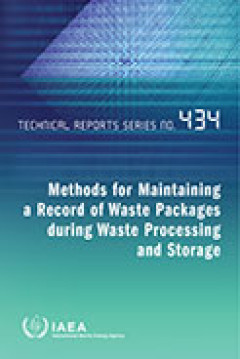
Methods for Maintaining a Record of Waste Packages during Waste Processing an…
During processing, radioactive waste is converted into waste packages and sent for storage and ultimately for disposal. A principal condition for acceptance of a waste package for storage or disposal is its full compliance with waste acceptance criteria for disposal or storage. To declare compliance of a waste package with waste acceptance criteria, a system for generating and maintaining recor…
- Edisi
- -
- ISBN/ISSN
- 92-0-114704-X
- Deskripsi Fisik
- 37 pages, 332KB
- Judul Seri
- -
- No. Panggil
- 621.4838 IAE M
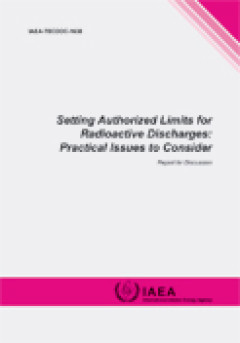
Setting Authorized Limits for Radioactive Discharges: Practical Issues to Con…
This publication provides an overview of the practical aspects related to the implementation of programmes for protection of people and the environment from radiological effects of authorized radioactive discharges. It includes a description of the main processes involved in setting discharge authorizations and presents examples of current practice drawn from national experiences in activities …
- Edisi
- 1638
- ISBN/ISSN
- 978-92-0-114909-1
- Deskripsi Fisik
- 80p.;1.12MB
- Judul Seri
- -
- No. Panggil
- 621.48 IAE S
 Karya Umum
Karya Umum  Filsafat
Filsafat  Agama
Agama  Ilmu-ilmu Sosial
Ilmu-ilmu Sosial  Bahasa
Bahasa  Ilmu-ilmu Murni
Ilmu-ilmu Murni  Ilmu-ilmu Terapan
Ilmu-ilmu Terapan  Kesenian, Hiburan, dan Olahraga
Kesenian, Hiburan, dan Olahraga  Kesusastraan
Kesusastraan  Geografi dan Sejarah
Geografi dan Sejarah